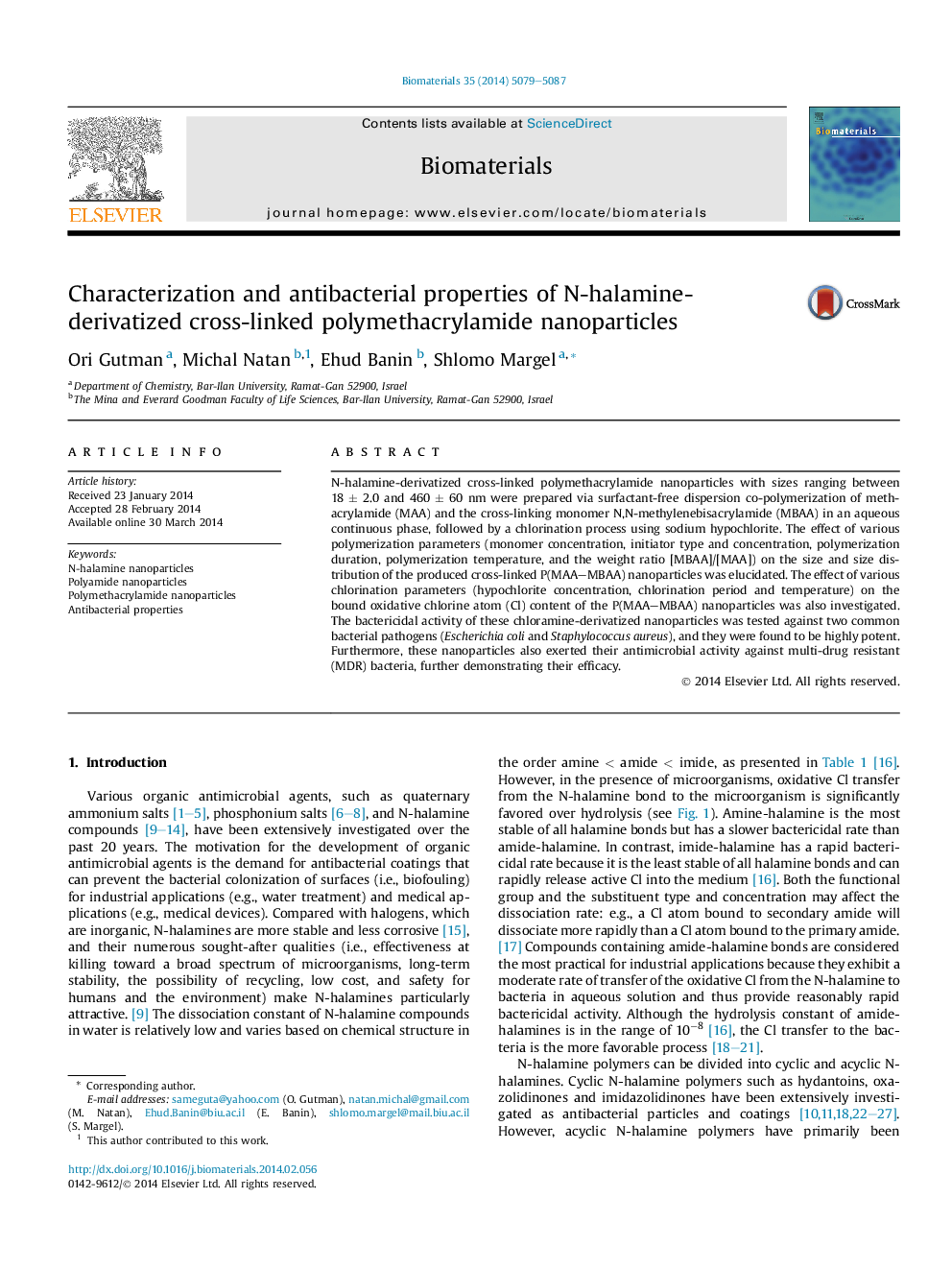| Article ID | Journal | Published Year | Pages | File Type |
|---|---|---|---|---|
| 10227331 | Biomaterials | 2014 | 9 Pages |
Abstract
N-halamine-derivatized cross-linked polymethacrylamide nanoparticles with sizes ranging between 18 ± 2.0 and 460 ± 60 nm were prepared via surfactant-free dispersion co-polymerization of methacrylamide (MAA) and the cross-linking monomer N,N-methylenebisacrylamide (MBAA) in an aqueous continuous phase, followed by a chlorination process using sodium hypochlorite. The effect of various polymerization parameters (monomer concentration, initiator type and concentration, polymerization duration, polymerization temperature, and the weight ratio [MBAA]/[MAA]) on the size and size distribution of the produced cross-linked P(MAA-MBAA) nanoparticles was elucidated. The effect of various chlorination parameters (hypochlorite concentration, chlorination period and temperature) on the bound oxidative chlorine atom (Cl) content of the P(MAA-MBAA) nanoparticles was also investigated. The bactericidal activity of these chloramine-derivatized nanoparticles was tested against two common bacterial pathogens (Escherichia coli and Staphylococcus aureus), and they were found to be highly potent. Furthermore, these nanoparticles also exerted their antimicrobial activity against multi-drug resistant (MDR) bacteria, further demonstrating their efficacy.
Keywords
Related Topics
Physical Sciences and Engineering
Chemical Engineering
Bioengineering
Authors
Ori Gutman, Michal Natan, Ehud Banin, Shlomo Margel,
